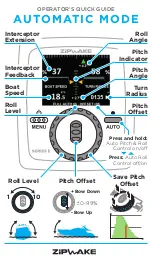
Thermo Scientific TZ-32 Zonal Rotor
General Description — 22
5. 1.
General Description
The zonal rotor is employed in the following manner.
Procedure
Item
Loading
Centrifugal Separation
Unloading
Solution flow
Speed
3,000 rpm
Specified speed
3,000 rpm
Procedure
Inject density gradient,
sample, overlay solution
Separation
Inject high density extrusion
and recover separated
solution
Mount the seal assembly on the rotor being turned at a speed of 3000 rpm, and load a density gradient solution, a
sample and overlay solution under the atmospheric pressure with the door of the centrifuge open. Then, remove the seal
assembly and place the cap assembly. After closing the door of the centrifuge, start the rotor and raise the rotor speed
up to a predetermined speed.
After the centrifugation reduce the rotor speed to 3000 rpm remove the cap assembly, mount the seal assembly again
and unload the solution from the rotor by feeding heavy solution into the edge of the rotor. The gradient solution containing
sedimented particles is unloaded by feeding a higher-density solution at the edge of the rotor. Also, the absorbancy of the
solution thus unloaded is fractioned by a fraction collector while it is being measured by a spectrophotometer. In a common
use, prepare the density gradient in the order of high to low density layers from the center to the edge of the rotor. Feed as
“cushion” to the gradient solution of higher density a solution of a density equivalent to or higher than the maximum density
of the solution. This prevents the heaviest particles from reaching the edge of the rotor when a sample is centrifuged.
After loading the “cushion” stop the pump. Load a sample to be centrifuged beginning with the center of the rotor after
road the gradient solution and also load “overlay” or a lower - density solution, so that the sample is layered cylindrically
in the rotor. (The sample is loaded at the edge of the rotor as the case may be.) Then, a portion of the cushion previously
loaded is discharged in an amount equivalent to the amount of the sample and overlay thus loaded.
Table 6
Separation
Procedure
















































